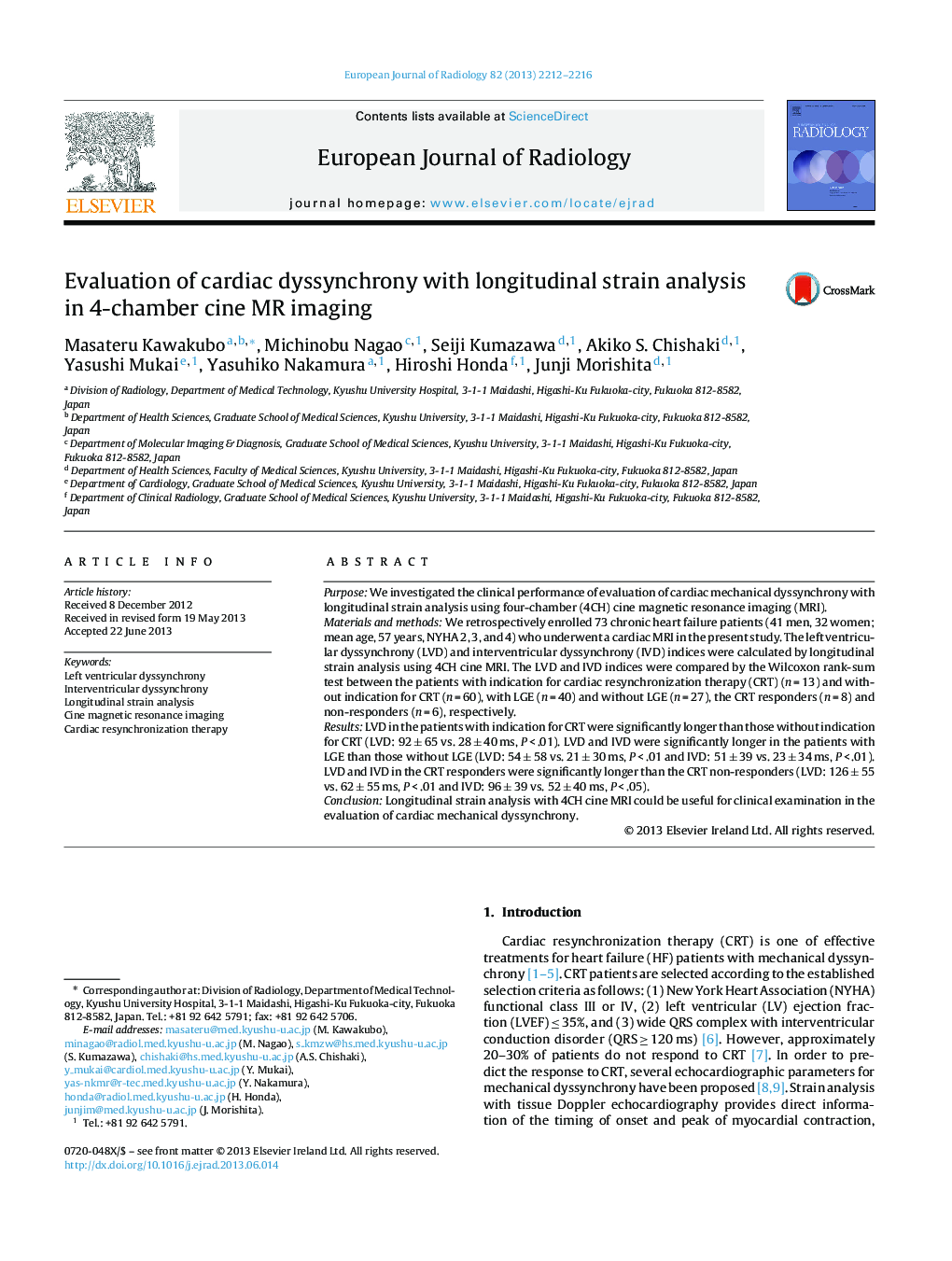| Article ID | Journal | Published Year | Pages | File Type |
|---|---|---|---|---|
| 6244038 | European Journal of Radiology | 2013 | 5 Pages |
PurposeWe investigated the clinical performance of evaluation of cardiac mechanical dyssynchrony with longitudinal strain analysis using four-chamber (4CH) cine magnetic resonance imaging (MRI).Materials and methodsWe retrospectively enrolled 73 chronic heart failure patients (41 men, 32 women; mean age, 57 years, NYHA 2, 3, and 4) who underwent a cardiac MRI in the present study. The left ventricular dyssynchrony (LVD) and interventricular dyssynchrony (IVD) indices were calculated by longitudinal strain analysis using 4CH cine MRI. The LVD and IVD indices were compared by the Wilcoxon rank-sum test between the patients with indication for cardiac resynchronization therapy (CRT) (n = 13) and without indication for CRT (n = 60), with LGE (n = 40) and without LGE (n = 27), the CRT responders (n = 8) and non-responders (n = 6), respectively.ResultsLVD in the patients with indication for CRT were significantly longer than those without indication for CRT (LVD: 92 ± 65 vs. 28 ± 40 ms, P < .01). LVD and IVD were significantly longer in the patients with LGE than those without LGE (LVD: 54 ± 58 vs. 21 ± 30 ms, P < .01 and IVD: 51 ± 39 vs. 23 ± 34 ms, P < .01). LVD and IVD in the CRT responders were significantly longer than the CRT non-responders (LVD: 126 ± 55 vs. 62 ± 55 ms, P < .01 and IVD: 96 ± 39 vs. 52 ± 40 ms, P < .05).ConclusionLongitudinal strain analysis with 4CH cine MRI could be useful for clinical examination in the evaluation of cardiac mechanical dyssynchrony.
